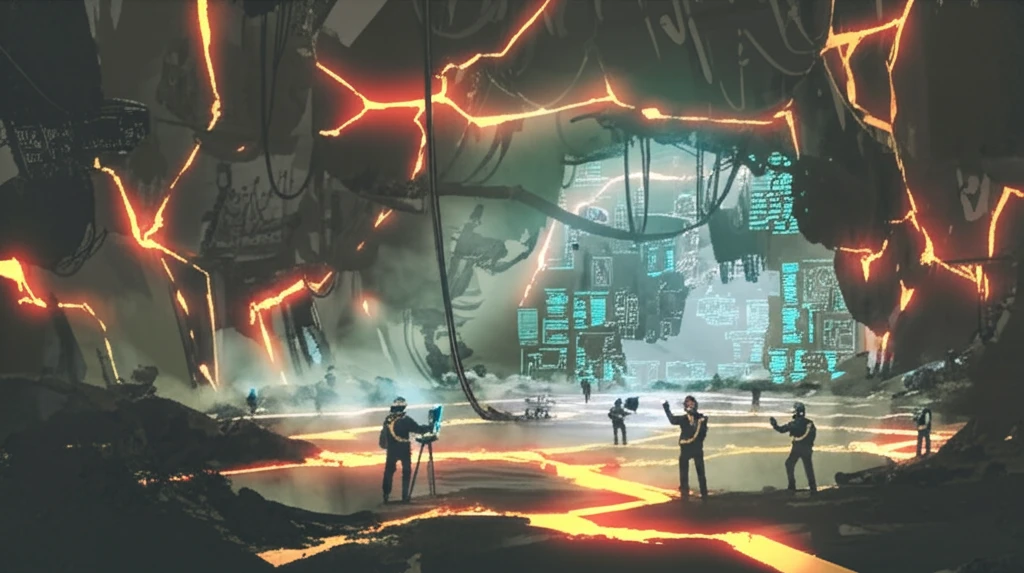
Cracking the Code: How Understanding Rock Stress Can Prevent Disasters
"Unlock the secrets of rock morphology under stress and discover how it impacts everything from mining safety to infrastructure stability."
From the towering skyscrapers that define our city skylines to the intricate networks of tunnels beneath our feet, and the expansive mines that yield essential resources, rock is a foundational element of our modern world. However, the very strength and stability we rely on can be compromised by the complex forces acting within these materials.
Understanding how rocks behave under stress is critical for preventing catastrophic failures. Whether it’s a tunnel collapse, a landslide, or a structural failure in a building, these events often stem from unseen cracks and weaknesses within the rock itself. That's why researchers are constantly working to decipher the mysteries of rock morphology – the study of rock shapes and structures – under the intense pressures of the earth.
Recent research is shedding light on how rocks respond to three-axis stress, a condition where pressure is applied from multiple directions. By simulating these conditions in the lab, scientists are gaining valuable insights into the formation and propagation of cracks, which ultimately determine a rock's breaking point. This knowledge is not just theoretical; it has practical applications that could save lives and protect infrastructure.
Why is understanding rock stress so crucial?

Imagine a construction site where workers are excavating a tunnel. The surrounding rock is under immense pressure, and any miscalculation could lead to a collapse. Similarly, in mining operations, understanding the stress on rock formations is essential for preventing accidents. Even the foundations of buildings are subject to constant stress, and over time, this can lead to cracks and structural instability.
- Enhancing Safety: Preventing accidents in mining and construction.
- Protecting Infrastructure: Ensuring the long-term stability of buildings and tunnels.
- Optimizing Resource Extraction: Making mining operations more efficient and safe.
- Predicting Natural Disasters: Understanding and mitigating the risks of landslides and earthquakes.
The Future of Rock Stress Research
As our understanding of rock stress continues to evolve, so too will our ability to manage and mitigate the risks associated with it. Ongoing research is focused on developing more sophisticated methods for analyzing rock fractures, including the use of advanced imaging techniques and computer modeling. By combining these tools with real-world observations, scientists hope to create a comprehensive picture of how rocks behave under stress, leading to safer and more sustainable practices for generations to come. This interdisciplinary approach, blending physics, engineering, and environmental science, promises a future where we can build and extract resources with greater confidence and minimal risk.
